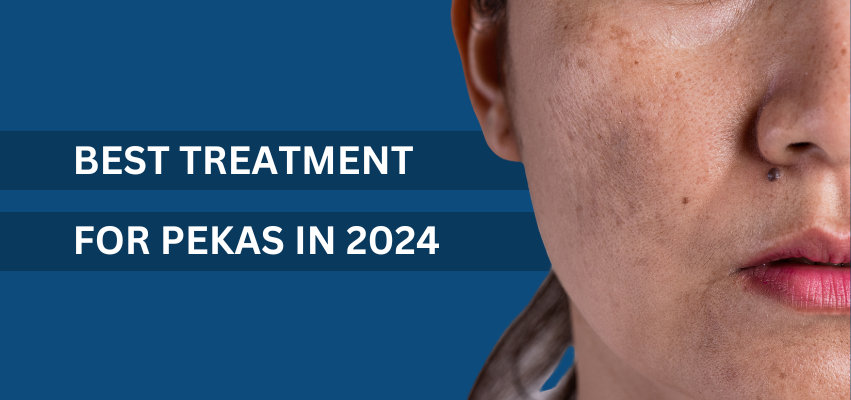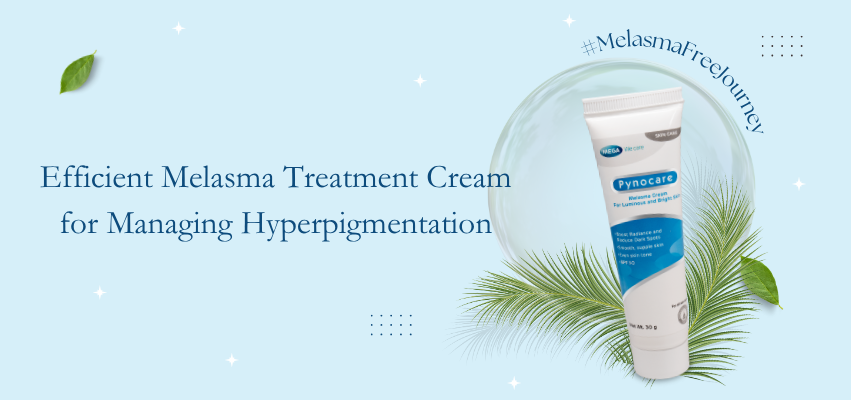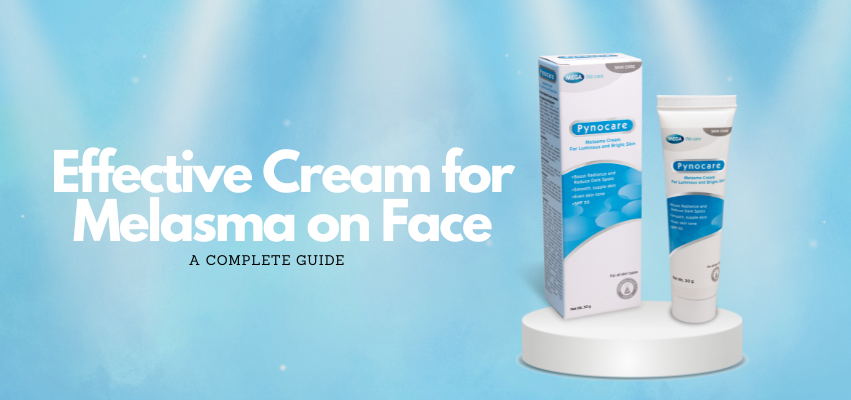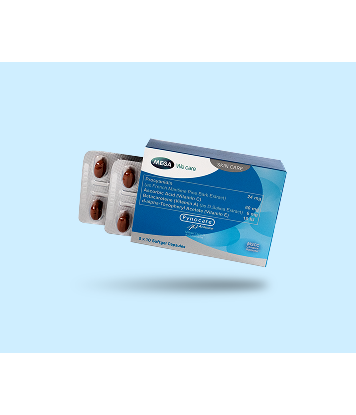Melasma, also known as “pekas”, is a common skin condition that causes brown to gray-brown patches on the face. Most people get it on their cheeks, bridge of their nose, forehead, chin, and above their upper lip. It can also appear on other parts of the body that get lots of sun, such as the forearms and neck. While not harmful or contagious, can definitely give your self confidence a solid punch – so it’s no question that a lot are still on the hunt to find the best treatment for pekas. Identifying the best treatment for pekas is a crucial yet complex endeavor, as the condition’s exact etiology or cause is not entirely understood.
Though the exact cause remains a mystery, experts believe that hormonal changes such as pregnancy or birth control pills, sun exposure, and certain skincare products may contribute to melasma. Treatment for melasma can be tricky and challenging at times especially due to high chance of recurrence. Treatment approach needs to be personalized and adapted to your specific situation. These treatments that have shown substantial efficacy can be broadly categorized into topical treatments, oral treatments, and supplementary clinical services or procedures.
Oral Treatments
Oral treatments for melasma are typically used in conjunction with other therapies. They work from the inside out to inhibit the production of melanin, the pigment responsible for the dark patches.
- Tranexamic Acid: Originally intended as an anti-fibrinolytic agent to control heavy bleeding, its role in inhibiting the pigmentation pathway made it an interesting option in the management of pigmentation conditions such as melasma. It suppresses the UV-induced plasmin activity within keratinocytes, which can otherwise escalate melanin production leading to a melasma flare-up. When taken orally, it systematically calms down excessive melanin production, thereby reducing the spreading footprint of melasma. However, usage is typically reserved for severe melasma and must be expert-guided considering potential side effects like gastrointestinal upset or a marginally increased risk of blood clots. Make sure to consult a physician before taking such medications especially if you have underlying conditions.
- Glutathione: This natural antioxidant endogenously produced by the body has also found its place in the oral treatment of melasma. Known as the body’s “master antioxidant,” oral glutathione supplements have been widely used not only in melasma but in cosmetic procedures due to its skin-lightening effects. Glutathione works by inhibiting tyrosinase and modifying the synthesis pathway of melanin from darker eumelanin to the lighter pheomelanin. Despite this promising process, available evidence on its effectiveness in melasma remains controversial and inconclusive. Some considerations when using this treatment include the short half-life of glutathione in the body and the potential for side effects such as allergic reactions.
- Oral Contraceptives and Hormonal Therapy: Hormonal changes are noted as potential triggers for melasma, particularly in women. It’s observed that pregnancy, hormonal contraceptives, and hormone replacement therapy, which cause fluctuations in estrogen and progesterone levels, can exacerbate or worsen melasma. As such, evaluating and adjusting these therapies under expert guidance might be an essential part of the overall melasma management strategy.
- Procyanidin: Procyanidin is a plant-based compound that has potent antioxidant properties. Antioxidants are crucial for skin health as they combat harmful free radicals in the body that can damage cells and accelerate aging. Current studies suggest that topical procyanidin can inhibit the production of melanin, which causes the discoloration in melasma. Using it alongside other treatments can potentially help enhance your melasma treatment results.
- Vitamin A: Vitamin A, appearing in skincare products as retinol or Retin-A among others, has demonstrated a capacity to reduce skin pigmentation and improve skin health. It does this by accelerating your skin’s cell turnover – the process by which new skin cells replace old ones. This helps to lighten melasma spots over time.
- Vitamin C: Vitamin C, a highly effective antioxidant, offers two major benefits for melasma treatment. Firstly, it can inhibit the enzyme tyrosinase, which prevents melanin production. Secondly, by neutralizing free radicals, it protects the skin against harm from the environment, including sun damage. Most skincare professionals recommend a serum with L-ascorbic acid for the most potent and penetrative form of Vitamin C.
- Vitamin E: Vitamin E is a fat-soluble vitamin that acts as an antioxidant, reducing oxidative stress in the skin, which contributes to the development of melasma. This vitamin also works to stabilize and boost the effectiveness of vitamin C, making them an often-seen duo in skincare products.
- Pynocare: The above list might sound promising but the idea of taking multiple supplements at once might dissuade some people. Pynocare combines the power of four of the oral supplements on the list. It contains Procyanidin (as French maritime pine bark extract), and vitamins A (as D. salina extract), C (Ascorbic acid), and E (d-Alpha tocopheryl acetate). It is clinically-proven to reduce melasma pigmentation with continuous use in as early as 8 to 12 weeks. It is recommended to take one capsule twice daily or as prescribed by your physician.
When it comes to oral treatments for melasma, patient preference, the severity of melasma, potential side effects, and underlying triggers are significant deciding factors. Therefore, these treatments should be tailored individually under expert supervision, ensuring cautious monitoring and follow-ups. Furthermore, oral treatments are often combined with topical therapies and stringent sun protection regimen for comprehensive melasma management.
Topical Treatments
Topical therapies remain the first line for melasma management. The most popular agent is hydroquinone, a compound that hinders melanin production, effectively lightening the skin. Other compounds, such as azelaic acid and kojic acid, have seen utilization due to their depigmenting properties. Recently, cysteamine cream has gained attention for its significant efficacy, reducing melanin synthesis and ultimately lessening the intensity of melasma patches. Below are some of the best treatments for pekas available in the market.
- Hydroquinone: Known as the gold standard among skin-lightening agents, hydroquinone is a phenolic compound that inhibits the conversion of DOPA to melanin by suppressing the enzyme tyrosinase, which is crucial in melanin production. By limiting melanin, hydroquinone lightens the skin, reducing the darkness of melasma patches. Although highly effective, hydroquinone must be used under a dermatologist’s supervision due to the possibility of serious adverse effects. For one, it must not be used by women who are pregnant, planning to get pregnant, or those who are breastfeeding.
- Azelaic Acid: Azelaic acid is a naturally-occurring dicarboxylic acid yeast byproduct and functions by inhibiting DNA synthesis and mitochondrial enzymes, resulting in a decreased rate of melanin production. It’s known for its dual action, having both anti-inflammatory and anti-pigmentary properties. It works by selectively targeting hyperactive melanocytes to reduce hyperpigmentation. With melasma being linked to inflammatory pathways, it also helps that azelaic acid has anti-inflammatory effects.
- Kojic Acid: Kojic acid is a byproduct of the fermentation process of certain types of fungus, mainly from Aspergillus oryzae. It is often used in combination with other treatments for a synergistic effect. Kojic acid impedes the function of tyrosinase by blocking the copper binding site of this enzyme. However, it’s also known to be a sensitizer, meaning users might develop allergies or sensitivities over time.
- Cysteamine: Cysteamine is an aminothiol that’s naturally present in human skin cells. As a skin-lightening cream, cysteamine works by reducing melanin production within the melanocyte. It reduces the oxidation of dopaquinone, a crucial step in melanin synthesis, resulting in slower pigmentation.
- Topical tranexamic acid: While it is primarily used orally for melasma, tranexamic acid can also be used topically. It exhibits a whitening effect on melasma patches by inhibiting plasminogen activation, which would otherwise stimulate melanocytes to produce more pigment.
- Tretinoin: A derivative of vitamin A, tretinoin expedites skin cell turnover and inhibits an enzyme needed for melanin synthesis. The result: it helps bring new, non-pigmented cells to the surface faster, while simultaneously ridding the skin of the older, pigmented cells.
All these topical agents have shown promise in melasma treatment. Importantly, they offer a personalizable, feasible, and direct mode of action against this stubborn skin condition. However, it should be noted that these agents are not without potential side effects, which might include skin irritation, redness, dryness, or photosensitivity. As such, their use should always be under the guidance and supervision of a healthcare professional or dermatologist.
Clinical Services
For those who don’t respond to oral or topical treatments, there are several clinical services available.
Microdermabrasion and Dermabrasion: Microdermabrasion is a minimally invasive exfoliating procedure that physically removes the top layer of the skin, encouraging
Laser Therapy: Lasers can target and break down the excess melanin in the skin. When it comes to lasers, many different types have been employed in the battle against melasma, in both ablative and non-ablative form.
- Non-ablative lasers: Non-ablative lasers, like Q-switched Nd:YAG laser, send short pulses of light to the skin in picoseconds, selectively breaking down pigment particles without damaging the surrounding tissue. It tackles the melanin at a cellular level, breaking it up so the body can naturally remove it.
- Fractional ablative lasers: Fractional ablative lasers, such as the fractional CO2 laser and the erbium:YAG laser, create microscopically small holes into the skin to induce a healing response that can lighten the skin. These treatments are ablative, meaning they damage the skin’s surface to promote regrowth.Pulsed-Dye Lasers: Pulsed-Dye Lasers (PDL) are vascular lasers that target blood vessels but also have a melanin-absorbing wavelength. They can be useful for some cases of melasma, particularly those with a vascular component.
- Chemical Peels: A popular form of treatment, chemical peels use substances like glycolic acid, trichloroacetic acid, or Jessner’s solution. These substances are applied topically, gently exfoliating and peeling away the top epidermal layer and exposing a new layer of refreshed skin. Glycolic acid, a type of alpha hydroxy acid, is commonly used due to its highly effective exfoliating properties. The result of a chemical peel is achieved through encouraging rapid cell turnover, evening out skin tone, and lightening those stubborn melasma patches. However, as with any procedures, chemical peels should be done under the supervision of a professional. Mild to moderate side effects are also to be expected such as redness, itching, and irritation.
- Picosecond lasers: Picosecond lasers which emit energy in picoseconds (trillionths of a second), are also effective in treating melasma by shattering the pigment particles into finer pieces. These ultra-short pulses deliver less heat to the skin tissues, reducing the risk of post-treatment pigmentation. new, healthy skin to grow. It’s carried out using a special instrument that gently sands the skin or sprays fine particles onto the skin that are then vacuumed back up along with the dead or damaged cells. This procedure can renew skin texture and appearance and may assist in reducing the appearance of melasma. Despite its popular use in the past, more recent developments and options are favored, particularly due to its potential long-term side effects.
- Hydrafacial: Hydrafacial works similarly to microdermabrasion but instead of particles to exfoliate the skin, it uses serums to do the exfoliation. This is then followed by a mild chemical peeling agent such as salicylic acid or glycolic acid.
- Microneedling: In the context of melasma, microneedling can be used along with other treatments to boost their overall efficacy. For instance, when microneedling is done in conjunction with the topical application of tranexamic acid or even vitamin C, it can lead to more intense and rapid lightening of melasma patches. The rationale behind this is that these active substances can penetrate deeper into the layers of the skin through the micro-channels, reaching the melanocytes more effectively. By doing so, they work from the inside out, inhibiting the production of melanin more effectively.
Despite these advantages, caution should be exercised during any of these procedures. These procedures could potentially cause post-inflammatory hyperpigmentation if not done appropriately. Therefore, it is highly advisable to have this treatment under the supervision of a trained professional.
Conclusion
Melasma can be a challenging condition to treat, and it often requires a combination of therapies to achieve the best results. It’s important to consult with a dermatologist or skin care professional to develop a treatment plan that’s tailored to your specific needs. With the right approach, it’s entirely possible to manage melasma and achieve clearer, healthier skin.
Disclaimer: The information presented in this article is based on expert advice and peer-reviewed research, aimed at enhancing understanding of the diverse strategies for melasma management. However, it is important to clarify that the content should not be used as a replacement for professional medical advice, diagnosis, or treatment.
References
Arora, P., Sarkar, R., Garg, V. K., & Arya, L. (2012). Lasers for treatment of melasma and
post-inflammatory hyperpigmentation. Journal of Cutaneous and Aesthetic Surgery, 5(2), 93–103. https://doi.org/10.4103/0974-2077.99436
Austin, E., Nguyen, J. K., & Jagdeo, J. (2019b). Topical treatments for melasma: A Systematic review of randomized Controlled trials. PubMed, 18(11). https://pubmed.ncbi.nlm.nih.gov/31741361
Bailey, A. J. M., Li, H. O., Tan, M. G., Cheng, W., & Dover, J. S. (2022). Microneedling as an adjuvant to topical therapies for melasma: A systematic review and meta-analysis. Journal of the American Academy of Dermatology, 86(4), 797–810. https://doi.org/10.1016/j.jaad.2021.03.116
Grimes, P., Ijaz, S., Nashawati, R., & Kwak, D. (2019). New oral and topical approaches for the treatment of melasma. International Journal of Women’s Dermatology, 5(1), 30–36. https://doi.org/10.1016/j.ijwd.2018.09.004
Jiryis, B., Toledano, O., Avitan-Hersh, E., & Khamaysi, Z. (2024). Management of Melasma: Laser and Other Therapies—Review study. Journal of Clinical Medicine, 13(5), 1468. https://doi.org/10.3390/jcm13051468
Mahajan, V. K., Patil, A., Blicharz, L., Kassir, M., Konnikov, N., Gold, M. H., Goldman, M. P., Galadari, H., & Goldust, M. (2022). Medical therapies for melasma. Journal of Cosmetic Dermatology, 21(9),
3707–3728. https://doi.org/10.1111/jocd.15242
Sarkar, R., Handog, E. B., Das, A., Bansal, A., Macarayo, M. J., Keshavmurthy, V., Narayan, V., Jagadeesan, S., Pipo, E., Ibaviosa, G. M., Podder, I., & Bansal, S. (2023). Topical and Systemic Therapies in Melasma: A Systematic review. Indian Dermatology Online Journal, 14(6), 769–781. https://doi.org/10.4103/idoj.idoj_490_22
Zhang, L., Tan, W., Fang, Q., Zhao, W., Zhao, Q., Gao, J., & Wang, X. (2018). Tranexamic Acid for Adults with Melasma: A Systematic Review and Meta-Analysis. BioMed Research International, 2018, 1–13. https://doi.org/10.1155/2018/1683414
PYNOCARE (Procyanidin + Ascorbic Acid + Betacarotene + d-Alpha-Tocopheryl Acetate)
The first and only oral medicine that is clinically proven to reduce Melasma or dark spots formation in as early as 8 weeks. Unlike creams, lotions, and gels, it has MSCC or Melasma Skin Clear Complexion Complex formulation that deeply penetrates the inner layers of the skin, to help normalize melanin levels, thus minimizing the appearance of dark spots in a short time.
Mega Lifesciences Limited Inc. or Mega We Care, is actively involved in helping millions of people have access to safe, effective, world-class quality nutritional & herbal supplements, OTC, and ethical products.





















No Comments on Best Treatment for Pekas in 2024